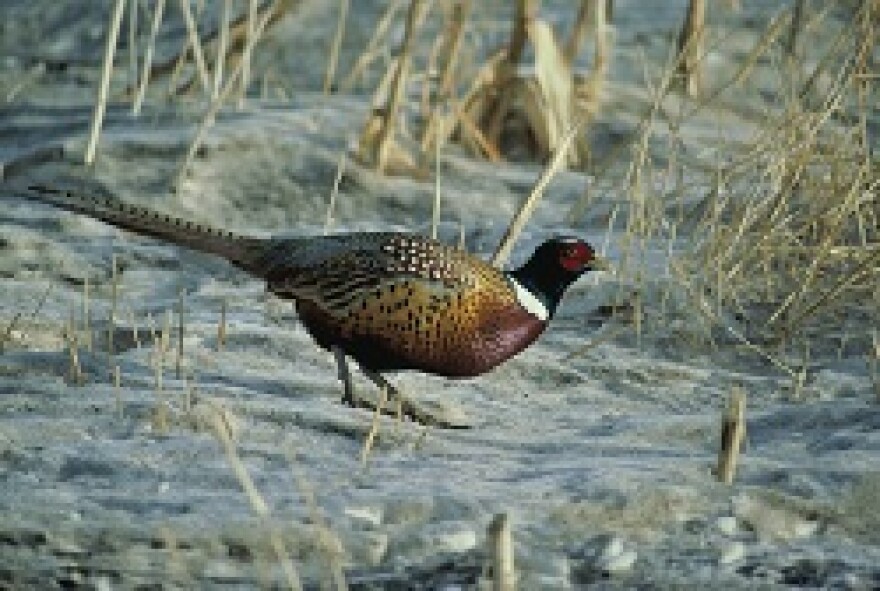The Wild About Utah archives were one of the first local resources I learned of as a newcomer curious about the large birds striding across my backyard, so it should come as no surprise to learn that it drew me to Utah Public Radio and the Bridgerland Audubon Society, where I am learning all the time, and so pleased to be contributing to the celebration of 15 years of Wild About Utah on Utah Public Radio!
UPR and the Bridgerland Audubon Society are a good fit because of our shared interests in uplifting, informing and connecting our audience to the world – to “inspire the mind, engage the imagination and perpetuate the habit of lifelong learning.”*
Many listeners know that “Audubon protects birds and the places they need today and tomorrow.”, and some know that Audubon holds a vision for “A future where birds thrive across the Americas because Audubon is a powerful, diverse, and ever-growing force for conservation.”, but everyone needs to know that the driving purpose is that “When we create conditions for birds to thrive, we create conditions for people and the planet to thrive, too.” The Bridgerland Audubon Society’s Amalga Barrens Sanctuary/ Cutler Marsh Important Bird Area (IBA) is a prime example of conservation in action:
The Bridgerland Audubon Society’s 146 acre Amalga Barrens Sanctuary Migratory Bird Protection Area (MBPA) includes one mile of Clay Slough [cow]- or “slew”! – open water for waterfowl and wading birds, and is part of the Cutler Reservoir and Marsh, a globally significant Important Bird Area (IBA) within the Great Salt Lake watershed. Water in an arid sagebrush steppe provides essential respite for migratory waterfowl, a few species of which are hunted on most other marshland in the region. Pickleweed, bulrush, cattail, and saltgrass provide cover, nesting, and food for birds and small mammals. Additional food sources include water insects such as water boatmen (corixids), and water mites.
Since 1927 Cutler reservoir and marsh have provided nearly 10,000 acres of varied habitat including open water, lowland riparian, wetland, wet meadow, playa, mudflats, grassland and agricultural fields for nesting, wintering, and stopover site for over 165 species of birds. White-faced Ibis, American Pelican, Long-billed Curlew, Black-necked Stilt, Avocet, Sandhill Crane, Wilson’s Phalarope, and Great Blue Heron are noteworthy.
Cutler IBA stakeholders include PacifiCorp, Utah Division of Wildlife Resources, with the 150 acre Bud Phelps Wildlife Management Area, Bridgerland Audubon Society and the Utah State Division of Forestry, Fire and State Lands (Bear River sovereign land).
I have not forgotten those large birds which stride through my backyard: they’re the Ring-necked Pheasant, a game species introduced to the U.S. from Asia in the 1800s,** and it turns out the reason you’re likely to see one well-dressed gentleman with a bright red face and a crisp white collar, accompanied by several well-camouflaged females is that “Pheasants practice “harem-defense polygyny” where one male keeps other males away from a small group of females during the breeding season.”**; another interesting fact is that “Ring-necked Pheasants sometimes cope with extreme cold by simply remaining dormant for days at a time.”** – now isn’t that a clever adaptation!
I’m Hilary Shughart with the Bridgerland Audubon Society, and I am Wild About Utah!
*The mission of Utah Public Radio is to enrich the lives of listeners throughout the State of Utah with quality programming designed to inspire the mind, engage the imagination and perpetuate the habit of lifelong learning. https://www.upr.org/mission
**Ring-necked Pheasant https://www.allaboutbirds.org/guide/Ring-necked_Pheasant/overview
Credits:
Images: Courtesy
Featured Audio: Courtesy & Copyright © Kevin Colver, https://wildstore.wildsanctuary.com/collections/special-collections/kevin-colver
Text: Hilary Shughart, President, https://bridgerlandaudubon.org/
Additional Reading: Hilary Shughart and Lyle Bingham, https://bridgerlandaudubon.org/
Utah’s Featured Birds and Viewing Sites: A Conservation Platform for IBAs and BHCAs, by Keith Evans and Wayne Martinson (2008)
Image of IBA sign can be seen here: https://rockies.audubon.org/chapters
IBA Factsheet https://nasworks.s3.amazonaws.com/resource_files/IBAs_PolicyUse.pdf
Cutler Reservoir & Marsh IBA of Global Importance UT08 https://www.audubon.org/important-bird-areas/cutler-reservoir-and-marsh-ut08
Amalga Barrens eBird Checklist, 165 species https://ebird.org/printableList?regionCode=L693440&yr=all&m=
Bud Phelps WMA, Utah DWR
“At the Bud Phelps WMA, we’re partnering with Pheasants Forever to plan work that includes food plots, other habitat enhancements and fencing. More woody vegetation is greatly needed on this WMA, which has been historically dominated by Garrison creeping meadow foxtail, a highly adaptable grass species. Measures to diversify the vegetation have been underway for a few years, and this project is part of that shift.” https://wildlife.utah.gov/news/wildlife-blog/766-better-habitat-morebirds.html



